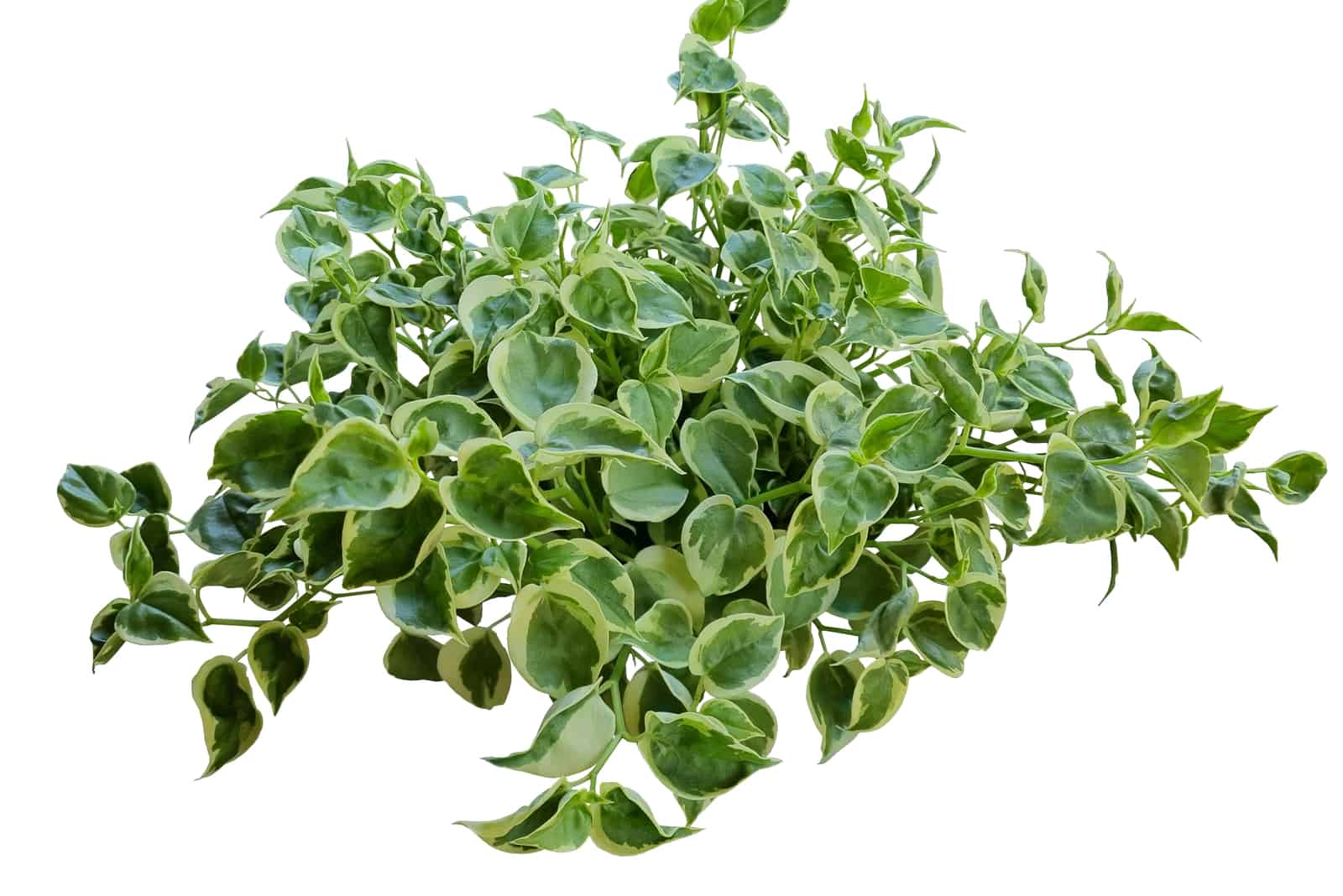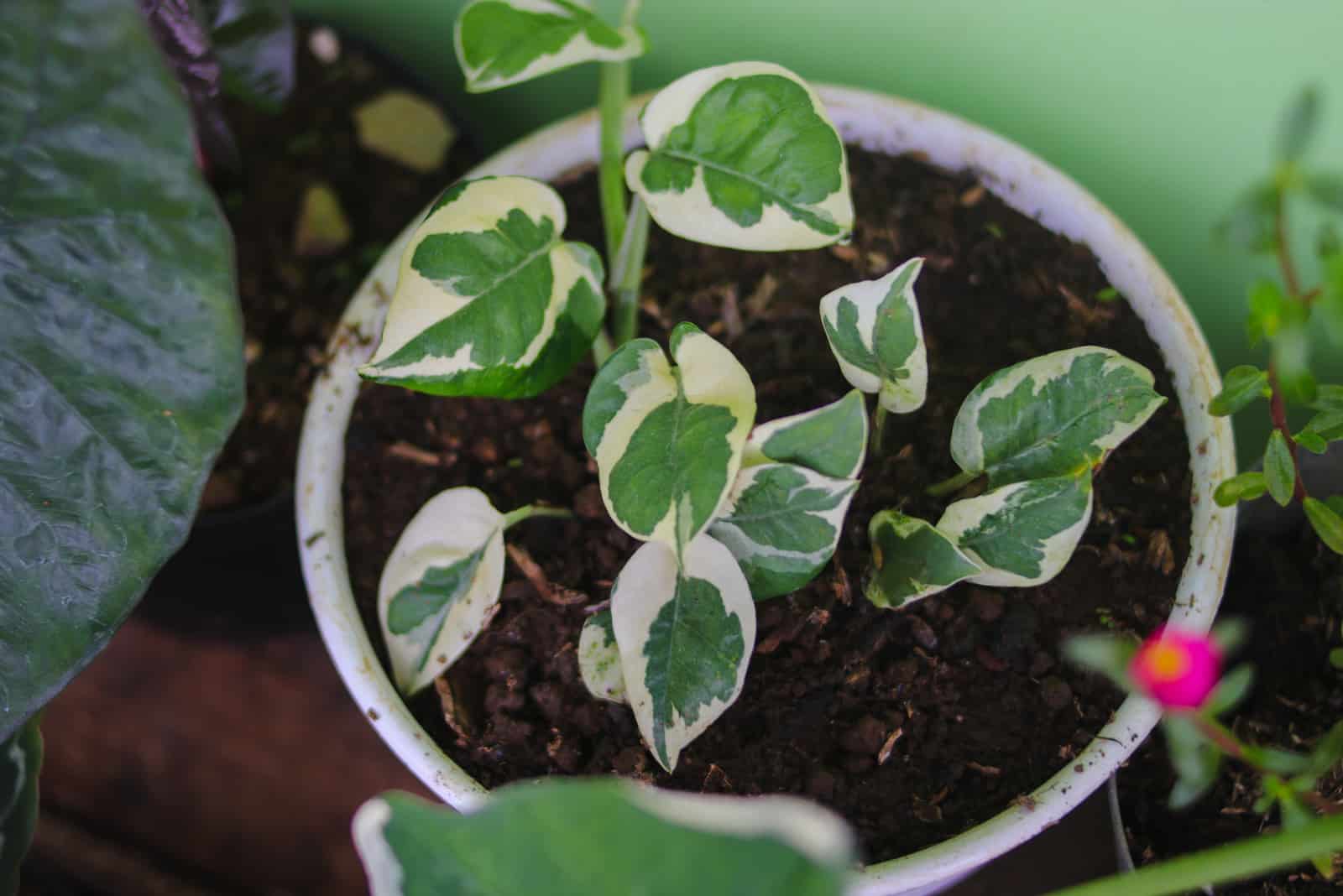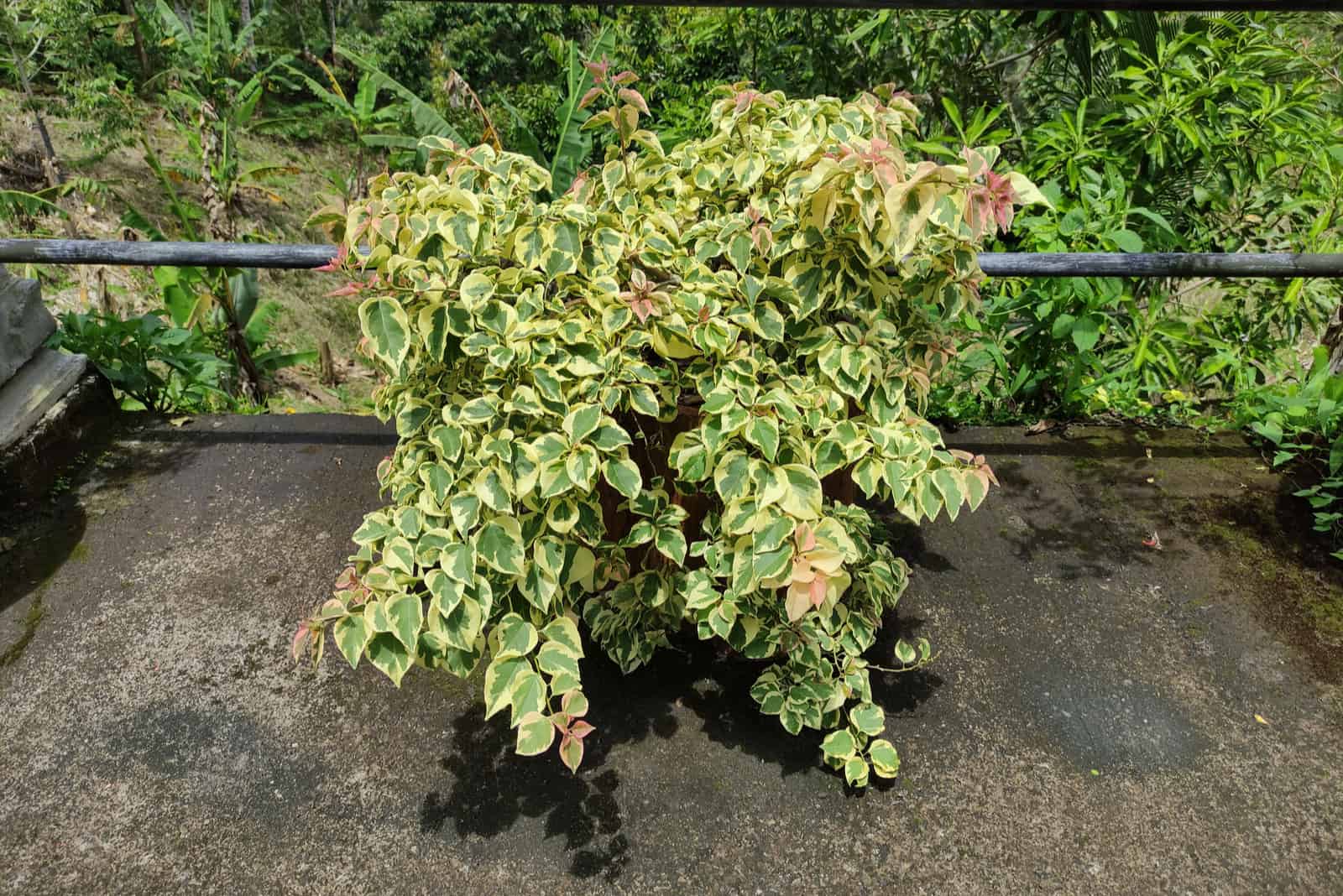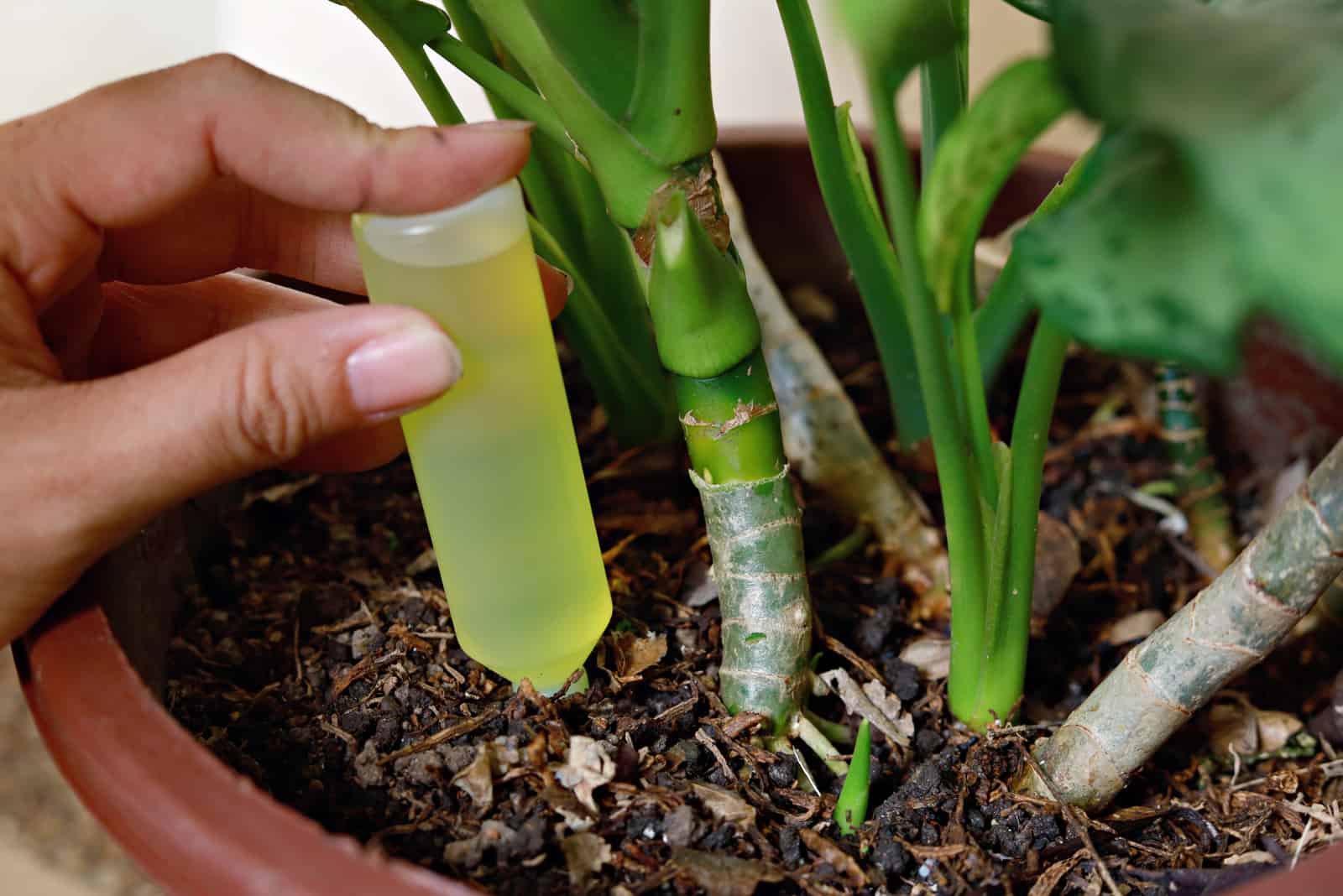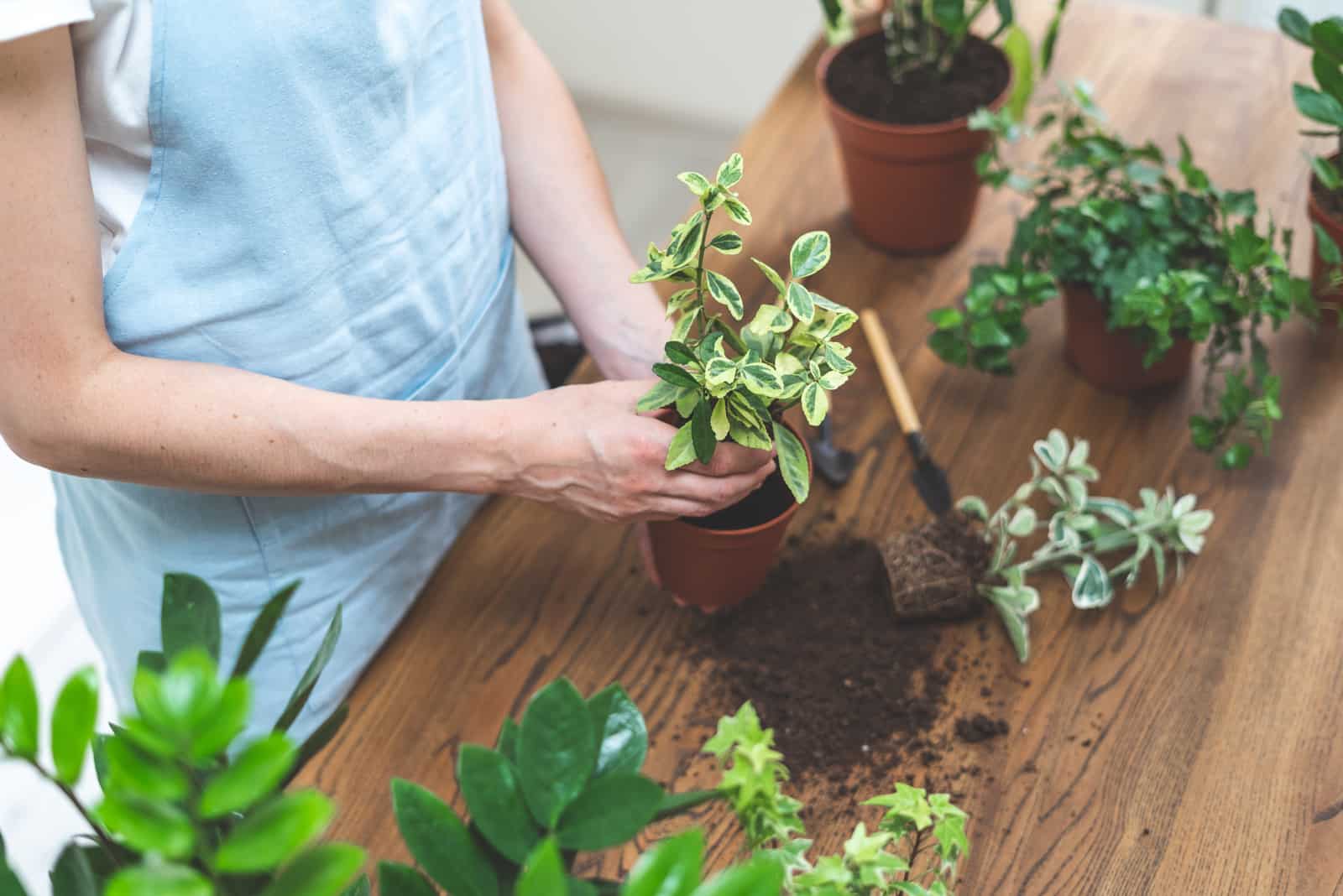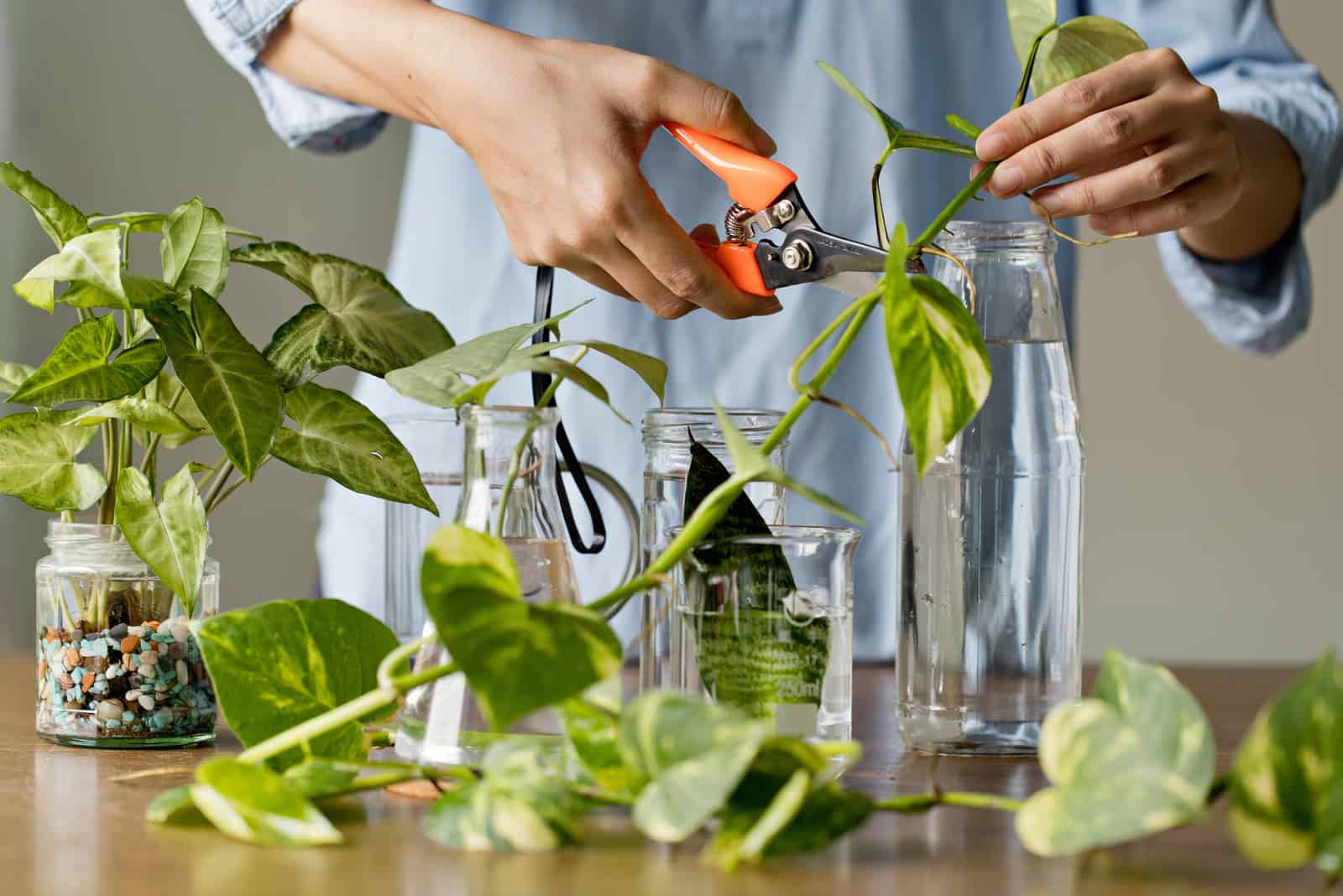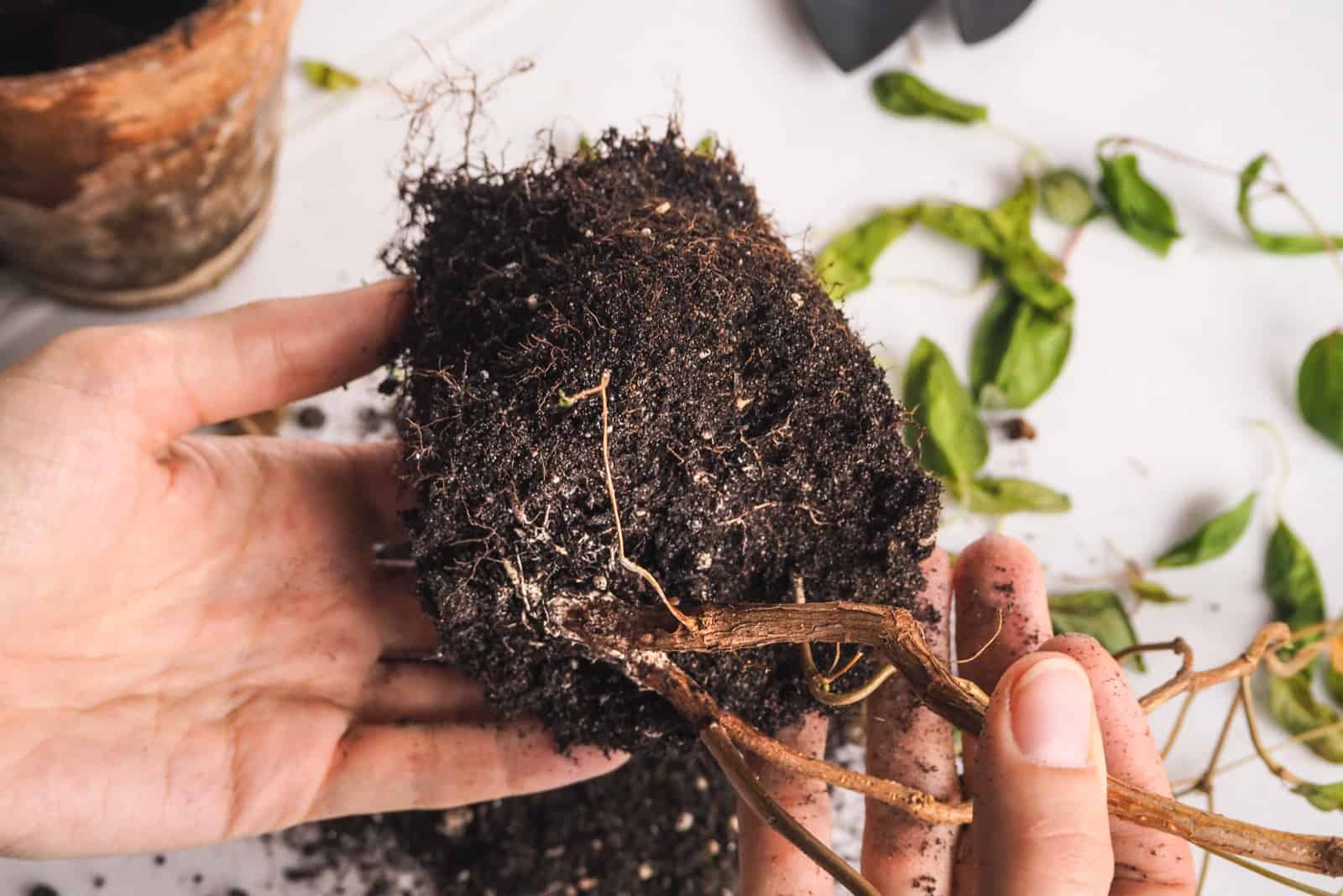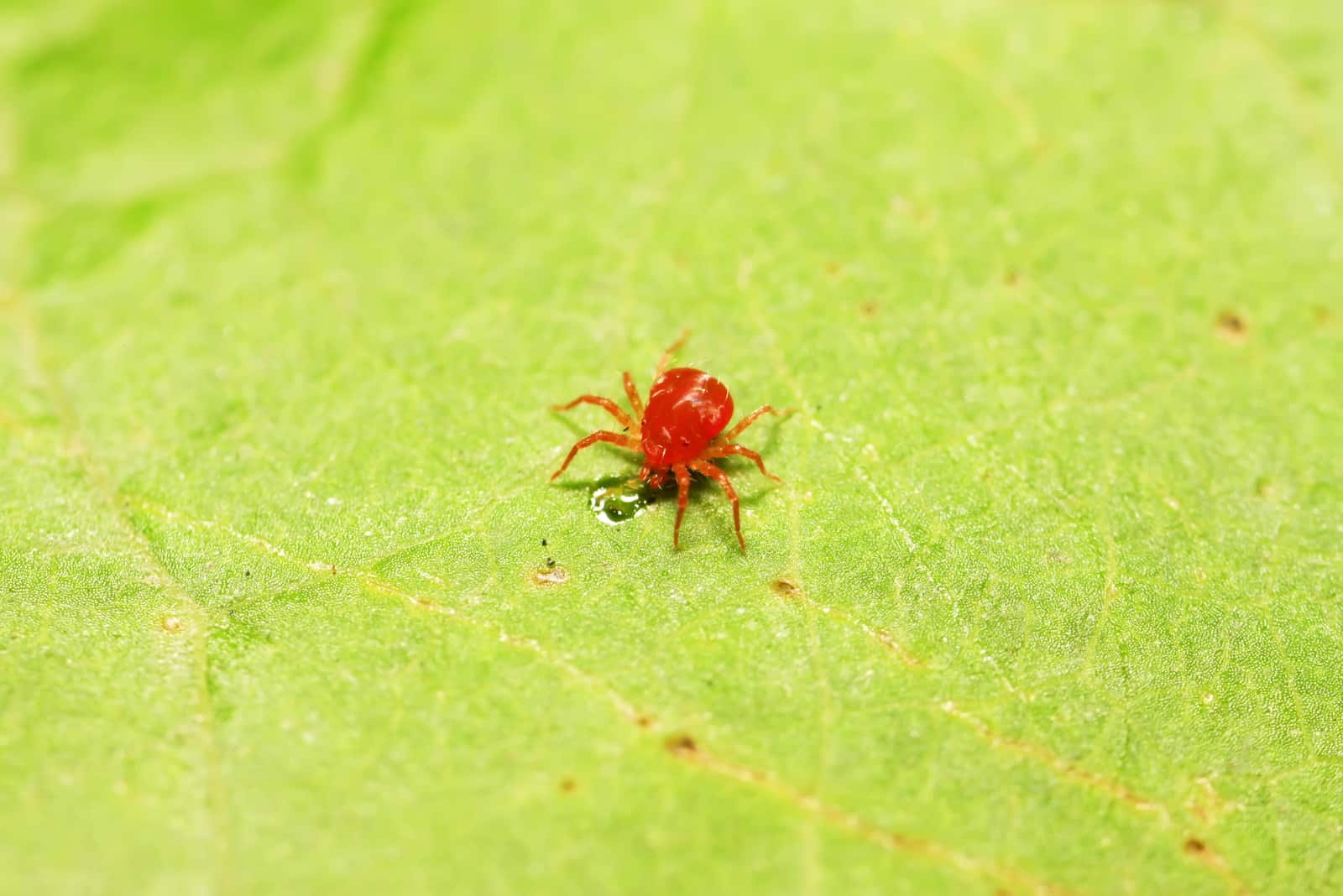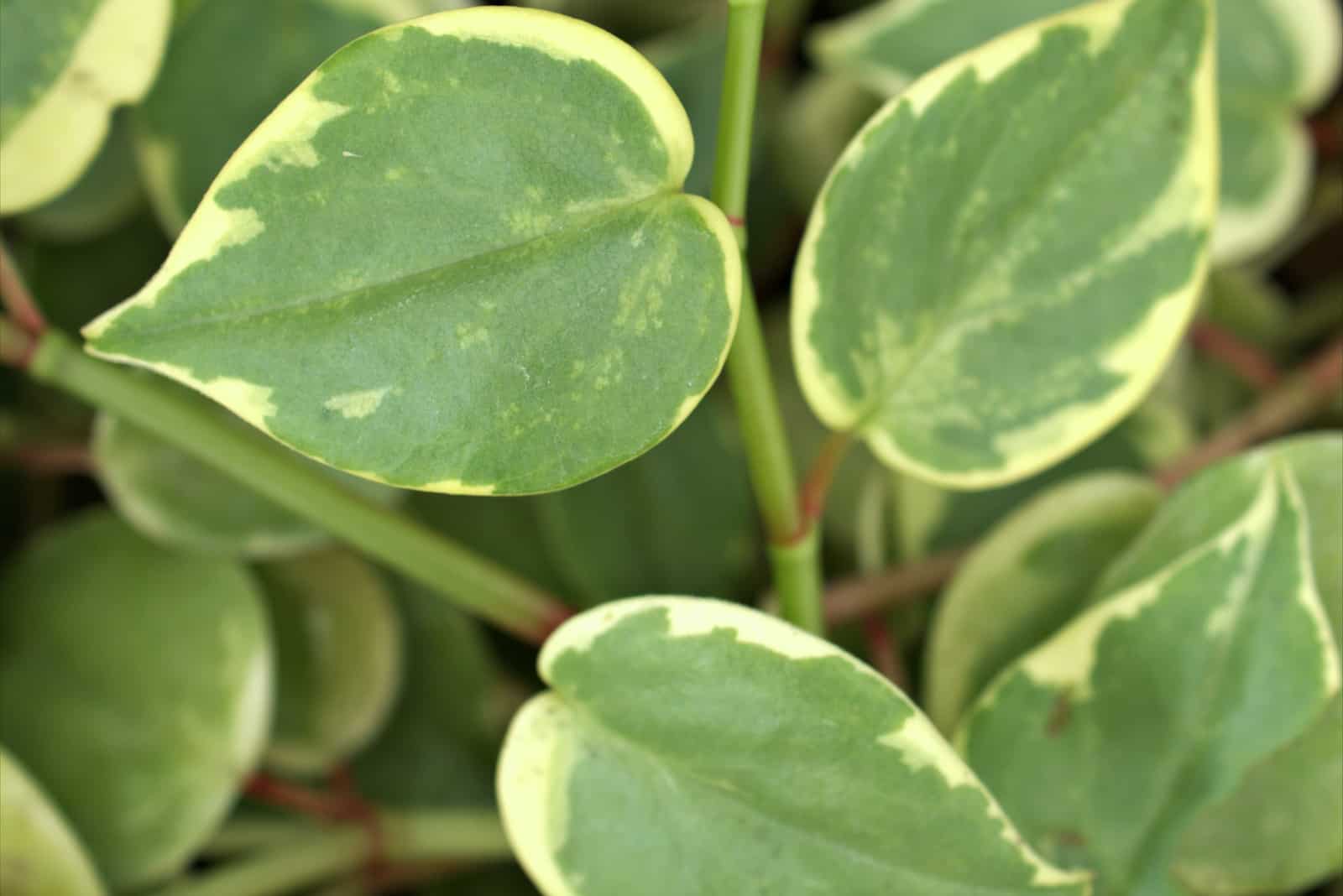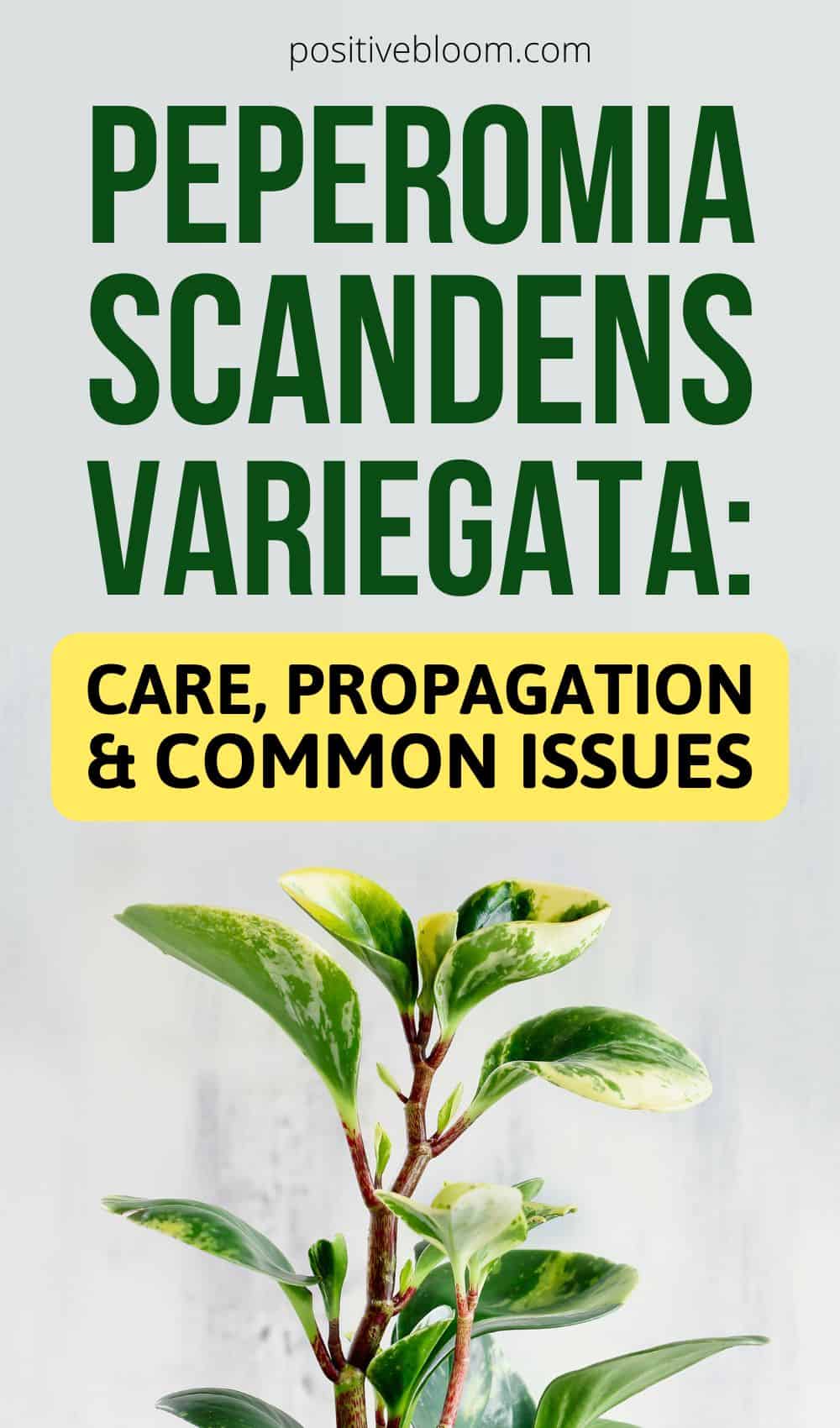Positive Bloom is an Amazon Associate and we earn from qualifying purchases through these links at no extra cost to you.
You’ve probably heard about the Cupid Peperomia, although its real name is Peperomia Scandens Variegata, and some also call it False Philodendron.
Based on the Cupid Peperomia’s name, your first thoughts are probably connected to arrows or hearts, and its heart-shaped leaves are why this plant is more commonly known as Cupid Peperomia.
These heart-shaped leaves are also why this plant got the name False Philodendron – it can easily be mistaken for philodendrons and pothos.
Remember, this is a very rare plant, and as such should be well treated.
This article will teach you some care tips to help you properly look after this lovely houseplant. You will also learn how to propagate your Peperomia Scandens Variegata and what can go wrong with it. Read on to discover everything you need to know about the Cupid Peperomia and more!
First, let’s look at some general information:
[table id=15 /]How To Care For A Peperomia Scandens Variegata
When it comes to the Peperomia Scandens Variegata, it demands slightly more significant attention than your average house plant.
There’s no need to worry though, because we have prepared this list of how to take proper care of your Peperomia regardless of the conditions in which you live, and whether you choose to keep it indoors or outdoors.
Pro-tip: As this is a trailing plant, you can put your Peperomia Scandens Variegata in a hanging basket outdoors so that the vinings point out, or in terrariums indoors to make it look even more stunning.
Follow all of our advice, and your Cupid Peperomia will keep its heart-shaped leaves healthy for a long time to come.
Watering
The Peperomia Scandens Variegata is reminiscent of succulent plants. This is because of the leaves’ ability to store water as well as its fleshy stem.
These plants don’t need much watering, so they are low maintenance.
The Cupid Peperomia should be watered every 7-10 days. Water it approximately every 7 days during summer and every 10 days during winter.
The watering schedule above should always be followed as long as every condition in the following sections is ensured.
You should only water your plant using room temperature water so as to avoid temperature stress.
Let the soil dry between waterings, but don’t let it dry out completely.
To check if the soil is ready for watering, simply put your finger in the soil, and if it feels wet, delay watering. You can also use a wooden stick; the plant doesn’t need watering if the soil remains on the stick after you pull it out.
You can also use a moisture meter instead of the finger and stick methods.
Avoid watering wet soil because it will lead to over watering.
Overwatering can cause root rot issues. See the “Common Issues” section for more information about root rot.
You should water the plant thoroughly if the soil is dried out.
Underwatering can cause the light green and creamy white leaves to fall off or become discolored along with the stem.
If you notice the leaves are drooping, you should check the moisture level in the soil.
Humidity
As the Peperomia Scandens Variegata is a tropical plant, it prefers higher humidity levels.
Ideal humidity ranges from 60% to 90%.
An interesting fact about this plant is that its succulent-like leaves can store water, which ensures good growth even in lower humidity levels.
Even if the humidity in your home only ranges from 40% to 50%, your plant will grow healthily.
Just pay attention if the humidity gets too low. You can always use a humidifier or mist the leaves approximately twice a week.
Caution: don’t mist the leaves too much so as to avoid pathogen infections.
Soil
As with every other plant, soil plays a crucial role in the plant care of indoor plants.
There are three things potting soil needs to meet the requirements of a Cupid Peperomia.
1. A good drainage system
2. A potting mix
3. Correct pH levels
It is very important for the soil to be well-draining. To achieve this, you can purchase a pot with drainage holes. Additionally, you can add compost to ensure better drainage.
The potting mix for Peperomia Scandens Variegata should consist of one part perlite and one part peat moss (usually grown outside in USDA hardiness zones 10 & 11).
This plant can grow in neutral and slightly acidic soil, with approximate pH levels between 5-7.5.
Light
The Cupid Peperomia requires bright indirect light.
This is because the Cupid Peperomia hangs from tall trees in the forests of Central America in its natural environment.
This means that it’s not too exposed to direct sunlight as trees provide it with partial shade.
To ensure good light conditions, place the plant near a window which faces north.
During summer, you can use a curtain to avoid direct sunlight and create partial shade, and during winter you can put the plant in a brighter place.
If the plant doesn’t receive enough bright indirect light, it can become stretchy or leggy.
Growing in a place with too much shadow can affect its variegated appearance, and the cream-white leaves can become darker.
Another interesting fact about this peperomia plant is that it will grow in places with artificial or fluorescent light.
This makes the plant perfect for places that don’t have much natural light, like offices or apartments.
Bear in mind that low light levels can affect the plant’s healthy growth, so if you use fluorescent light be sure that the plant is exposed to it for an extended period.
Temperature
The perfect indoor temperature should range from 68-72°F during summer and 55-60°F during winter.
Anything higher or lower can cause wilting during summer or freeze during winter.
If you want to be a Cupid Peperomia grower and place your plant outdoors, remember that snow can cause permanent damage to the plant.
Fertilization
Another reason this plant is excellent to grow is that it doesn’t need much fertilizing.
The great news is that it doesn’t need to be fertilized at all during winter and fall, which saves both time and money.
As far as the growing season is concerned, the Peperomia Scandens Variegata only needs to be fertilized once a month.
When it comes to which fertilizer to use, there are two options: non-organic or organic fertilizer.
If you are using non-organic, choose either a slow-release or balanced (10-10-10) liquid fertilizer.
When using slow-release fertilizer, apply it once during the growing season.
For non-organic fertilizer, choose fish emulsion. This fertilizer is commonly known as fish fertilizer.
Do not apply fertilizer more than once a month during the growing season. If the plant gets over-fertilized, some of its nutrients may become toxic.
Pruning
The Cupid Peperomia grows fast, which is why it will need pruning from time to time.
You only need to prune if there are some damaged leaves or stems present.
How to go about pruning the peperomia plant depends on your personal preferences and which shape you prefer.
If placed indoors, I am sure you will want to avoid excess leaves on your flower.
On the other hand, if grown outdoors, you may prefer placing it in a hanging basket and letting it spread.
If grown in the right conditions, the plant will get bushy so you will probably want to reshape it.
Repotting
Another great thing about this plant is that it doesn’t need to be repotted often.
If the plant grows healthily, you can even wait 3 to 5 years for repotting.
You will need to repot the plant when it’s wilting and when you overwater it.
Follow these 5 steps if you are repotting due to overwatering:
1. Carefully trim any part that is damaged.
2. Remove the soil around each root and check the root ball and entire root system.
3. Use a sterilized pair of scissors or pruners to avoid spreading the fungal infection to other parts of the plant, and be sure to remove all roots suffering from root rot.
4. Put fresh potting soil in a new pot and repot the plant.
5. Slightly water your Peperomia Scandens Variegata, and water it again the next week.
This is an excellent method to prevent potting mix from becoming too compacted, as compact soil could decelerate the drainage.
When it comes to the size of your new container, choose one that is 1 to 2 inches larger than the previous one.
Propagation Of Cupid Peperomia
Now we come to the best feature of this plant: propagation.
Why is this so great? Well, this is a very rare plant, so I’m sure you will be thrilled if you can get even more Cupid Peperomias.
Luckily, Peperomia plants like Peperomia Caperata, Peperomia Abricos, and of course, Cupid Peperomia are easily propagated.
The propagation of the Peperomia Scandens Variegata is performed by stem cuttings. There are two ways to propagate: stem cuttings in water and stem cuttings in soil.
Propagation By Stem Cuttings In Water
Here is the procedure for propagating a Cupid Peperomia in water:
• Between April and August, take some healthy stem cuttings by cutting off about 3 inches from the shoot tips using a sterilized knife or pruners.
• Remove leaves on lower nodes.
• Place cuttings with at least two nodes in water, leaving the leaves above. You should change the water regularly so that the spread of bacteria is prevented.
• Move the container somewhere with bright indirect light.
• 2-6 weeks later, or when the roots develop, bury the roots in fresh potting soil.
In this way, you will get a new Peperomia Scandens Variegata! Enjoy your brand new heart-shaped, cream white, and green leaves.
Propagation By Stem Cuttings In Soil
Another way to propagate a Cupid Peperomia is by stem cuttings in soil.
Follow the following steps if you decide to propagate by stem cuttings in soil:
• Just like with the procedure above, between April and August take healthy stem cuttings by cutting off about 3 inches from the shoot tips using a sterilized knife or pruners.
• Dip the end of the stem cutting in a rooting hormone to ensure better growth.
I suggest:
• Place the cutting in a potting mix consisting of coarse sand or perlite and one part peat. The cutting should be buried about half an inch in the soil.
• The potting mix should now be watered and covered by a bag made of polythene (put a couple of holes in it) or a tray made for propagation purposes.
• Place the cutting in a room with bright indirect light and in which temperature doesn’t go lower or higher than 65°F. Make sure you uncover the cutting every day until the time for repotting. In this way, you will prevent high levels of humidity. Otherwise the plant will be prone to fungal diseases.
• After a while, the plant will develop some leaves.
After each procedure when new plants grow, stick to your usual watering schedule and follow the care tips from the sections above.
Common Issues
Unfortunately, a couple of issues can occur with the Peperomia Scandens Variegata.
They include diseases and pests, and each problem can be caused by different reasons and have other consequences.
Let’s learn more!
Diseases
The most common diseases which afflict the Peperomia Scandens Variegata are root rot, stem rot, oedema, yellow leaves, and leaf curl.
Root Rot And Stem Rot
Both root rot and stem rot are very serious and are caused by the parasite pythium.
Pythium affects Cupid Peperomia due to overwatering, and this fungal infection spreads quickly in overwatered soil.
If you notice that your plant is wilting, it is likely that your Peperomia Scandens Variegata has root rot and stem rot due to pythium.
Search for black blotches and spots on the stem and roots to confirm the parasite infection.
If there are any blotches or spots, take the plant out of the soil and inspect the root system.
The affected roots will be discolored and weak.
Immediately prune the affected roots to prevent further infection, and then repot the plant.
Oedema
Oedema is caused by overwatering, and the symptoms are blisters or black patches.
Roots absorb water faster than they usually do and cause the symptoms above.
Additionally, oedema can cause the stem to rot.
To prevent oedema, improve the drainage system and let the soil dry completely.
Cut off the affected stems or leaves and spray the plant using sulfur.
Yellow Leaves
The bad thing about yellow leaves is that they can appear for many reasons.
Direct sunlight, excessive watering, and temperature shock are just some of the possible causes.
For Peperomia Scandens Variegata, the most common reason is direct sunlight.
Cupid Peperomias grow on trees under the forest canopy in their natural habitat, creating perfect shadows so direct sunlight doesn’t easily touch them.
When faced with direct sunlight, the green leaves will turn yellow.
The best solution is to remove any damaged leaves and place the plant in a room with bright indirect light.
Leaf Curl
Leaf curl can be caused by a calcium deficiency or different pests or bugs. Carefully inspect the plant and check for infection.
If there is no infection, check the pH of the soil. If you have over watered acidic soil, the calcium level deteriorates, causing leaf curl.
Another cause of leaf curl can be over-fertilizing. More significant amounts of phosphorus and nitrogen will reduce the absorption of calcium.
Pests
Common pests that affect Cupid Peperomia are spider mites, fungus gnats, and mealy bugs.
Spider Mites
Spider mites will cause the appearance of tiny spots on the undersides of the leaves that can be either white or brown.
To get rid of spider mites, mix alcohol and water, put the mixture in a spray bottle, and spray over the spider mites.
You can also use dish soap. Make a mixture that contains dish soap and water, put the mixture in a spray bottle, and spray over spider mites.
Fungus Gnats
Fungus gnats appear due to overwatering. Check for fungus gnats if you spot tiny black flies on the soil.
Mature fungus gnats won’t cause much trouble. On the other hand, their larvae feed on roots and cause severe infection.
Sand and cinnamon powder are the solution to this. They both accelerate the soil’s drainage and prevent fungus gnats from spreading.
Mealy Bugs
If you notice any cotton-like elements on your plant, it may be facing mealy bugs. These bugs are tiny and white, and their presence on your plant can be easily spotted.
If you want to remove mealybugs, you can use rubbing alcohol and dish soap. Mix them together and spray over the mealybugs, or use neem oil.
FAQs
1. Is it true that Peperomia scandens Variegata is extremely poisonous?
No, the Peperomia Scandens Variegata is not poisonous. It is safe for both humans and pets.
2. What is another use for the Peperomia scandens Variegata?
Alternative medicine is one other use for Peperomia Scandens Variegata. It helps with headache, acne, and joint pain treatments.
Final Words
Now that you’ve reached the end of this article, we hope you have learned everything about Peperomia Scandens Variegata that you need to know.
Just make sure to take good care of this beautiful and very rare plant!
One more thing, if you do propagate it, be sure to gift it to your loved ones.
It’s not surprising that it’s called Cupid Peperomia; its appearance hits you directly in the heart!
Until next time!
Like this post? Share or pin it for later!

